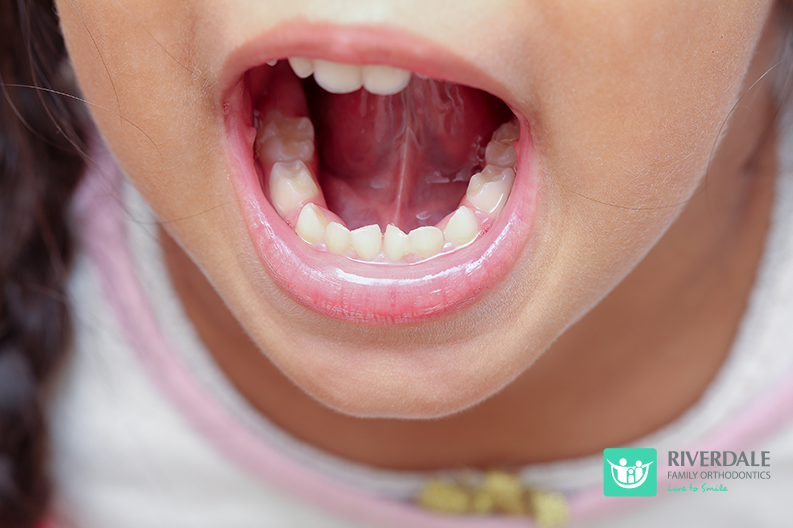Bronx, NY – Parenthood is full of questions, one of which is when the right time is for my child to start orthodontic treatment. While the common belief is that braces are only necessary once permanent teeth are in place, there is much evidence to support potential benefits of early intervention, even before baby teeth fall out. So, what’s best – braces on before or after the baby teeth? Dr. Catherine Woo lays out everything you need to know about both options.
The Early Intervention Perspective:
– Preventing Future Issues:
Early orthodontic treatment, often referred to as interceptive orthodontics, aims to address developing issues before they become more severe. By correcting crossbite problems, overcrowding, or jaw misalignments during the mixed dentition phase (when both baby and permanent teeth are present), orthodontists may be able to prevent more serious problems in the future like asymmetric growth of the jaws or impacted permanent teeth.
– Reducing Severity and Treatment Time:
Intervening early can help guide the growth of the jaw and create more space for permanent teeth. This may potentially reduce the severity of orthodontic issues and shorten the overall treatment time when braces are eventually applied to the permanent teeth.
The Traditional Approach:
– Waiting for Permanent Teeth:
The majority of orthodontic treatments traditionally begin after all the permanent teeth have erupted, usually around the ages of 11 to 13. This approach ensures that the orthodontist is working with a full set of teeth, allowing for comprehensive planning and treatment.
– Patient Cooperation:
The success of orthodontic treatment often relies on patient cooperation, including maintaining good oral hygiene and adherence to treatment plans. Waiting until a child is older may result in better compliance.
– Cost Considerations:
Some argue that early orthodontic interventions may lead to additional expenses if follow-up treatments are required later on. Waiting until all permanent teeth are present may offer a more cost-effective and comprehensive approach.
Dr. Woo urges parents to speak with a trained orthodontist prior to making decisions about their child’s smile.
“We recommend that children have their first consultation with us around the age of seven,” says Dr. Woo. “While the majority of children don’t need any sort of treatment this young, seeing us at this age allows us to see how the smile is taking shape. We can spot things that may pose a problem as the child grows. Then, we can monitor the progress of your child’s mouth and begin treatment at precisely the right time to have the most positive impact.”
Ultimately, the decision of whether to pursue braces before or after baby teeth fall out depends on various factors, including the specific orthodontic issues present, the child’s age, and the orthodontist’s professional judgment. An experienced orthodontist can assess the individual needs of the child and provide personalized recommendations.
With advancements in orthodontic technology, the landscape of early intervention is evolving, providing more options for parents seeking the best path to a healthy and beautiful smile for their children.
If your child is seven or older and hasn’t had an orthodontic consultation yet, call Dr. Woo and her team today at 718-884-7700.


No Comments